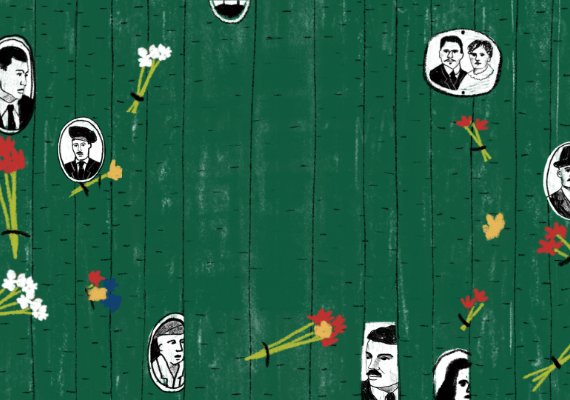language
RU
5 August 2025 12:00
Remembering the victims of the "national operations" of the Great Terror
Online

Every year on August 5, we commemorate the victims of the Great Terror in the USSR. The Great Terror refers to the period of “mass operations by the NKVD” in 1937-1938. During this time, hundreds of thousands of people were arrested and executed. It all began with the NKVD Order No. 00447 on operations against “kulaks and anti-Soviet elements.” By August 5, 1937, this order had been sent to all regional NKVD offices throughout the USSR, and the arrests began.
Several other NKVD orders were signed during the same period: on the arrest of “German subjects” and members of the “Polish military organization.” These marked the beginning of the so-called “Polish” and “German” operations. Together with a dozen other directives, they constitute the NKVD's “national operations” of 1937–1938. During these operations, those who were connected with countries bordering the USSR (and not only), who had visited them, their relatives and acquaintances, and even simply people with “foreign surnames” were arrested.
The Great Terror ended as it had begun — on orders from “above” in November 1938.
This year, on August 5 and the day before, we propose to remember the victims of the “NKVD national operations” in various regions of the USSR — as a result of the Great Terror, the ethnic, social, and cultural composition of many regions of the country changed dramatically and became heavily Russified.
During the 11 “national” operations, the NKVD Commission and the USSR Prosecutor reviewed 225,325 cases, and 170,482 people were sentenced to death by firing squad. In addition, at the final stage of the operations, the Special Troikas (“courts” of three people) reviewed at least 107,660 cases and sentenced at least 72,252 people to death by shooting.
For example, in Karelia, on the basis of the “Polish” and later the “Finnish” orders, about 4,500 Finns were arrested; most of them were executed. Repression along the “Finnish line” reached such proportions that Finns accounted for over 40% of all those arrested in Karelia in 1937–1938 (even though they made up only 3.2% of the population).
Places for mass burials of those shot were prepared in advance in almost every regional and district center of the USSR, even before the mass executions began — sometimes they were located within the city limits, more often — outside the city in the forest. Many names are well known: Sandarmokh, Krasny Bor, Levashovo, Pivovarika, Dubovka, 12th Kilometer, Kolpashevsky Yar, Tesnitsky Forest, Lisya Balka, Bykovnya, Kuropaty, Butovo, Kommunarka — but many are remembered less. Many cities have large or small monuments — sometimes they are located in the center, sometimes in cemeteries, sometimes only at execution sites outside the city.
This year, we continue to remember the victims of “national operations.”
Here's what you can do:
- Find representatives of any ethnic groups from any region of the USSR in the Open List database. If you need help, message @memorialtalks_bot on Telegram, and we will assist you.
- Take part in memorial practices. You can lay flowers at the monument to the victims of repressions, light candles, and leave notes (you can find inspiration in our longread). Send us photos and videos (@memorialtalks_bot), or tag us on social media.
- Install Last Address cardboard plaques (read more here).
- Share this on social media.
- Come up with new ways to remember — you can do this yourself or join forces with like-minded people.
On August 5, we will be posting your activist materials the whole day!
